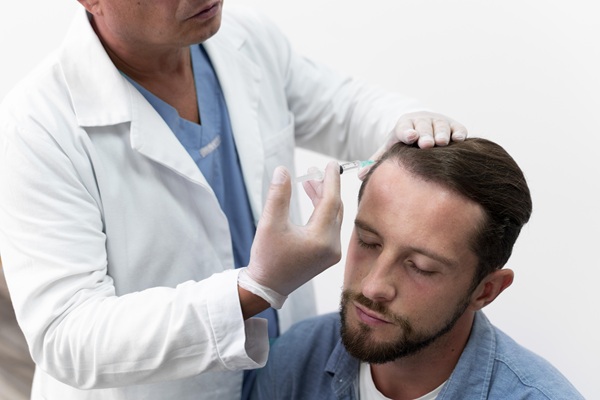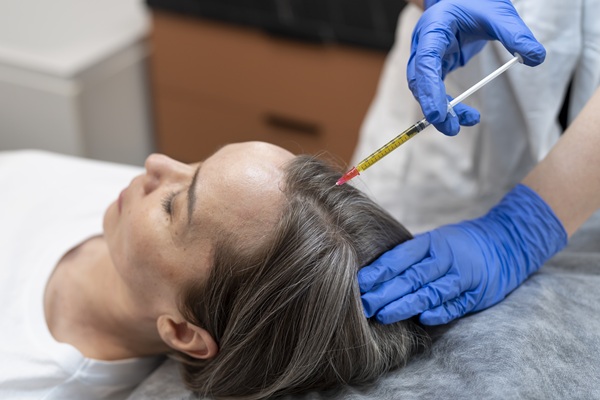Is Scalp Swelling Normal After Hair Transplant? 5 Signs You Shouldn’t Ignore
Have you noticed unusual puffiness after your hair transplant in Mangalore and wondered, “Is this normal or should I be worried?” It’s a question many patients quietly struggle with. For some, it’s a slight swelling that fades in days. For others, it lingers, looks uneven, or even feels uncomfortable—raising doubts about whether healing is on track. These concerns are real, and understanding when swelling is just part of recovery and when it’s a warning sign can make all the difference in feeling safe and reassured during your journey.
Why Does Scalp Swelling Happen After A Hair Transplant?
Swelling is the body’s natural way of protecting itself after surgery. Fluid collects around the scalp to support healing, which is why many patients notice puffiness around the forehead or even near the eyes in the first few days. Most of the time, this is temporary and nothing to worry about. But when swelling looks unusual or lasts longer than expected, it’s important to recognize it early.
5 Warning Signs Of Scalp Swelling That Shouldn’t Be Ignored
1. Swelling That Gets Worse Instead Of Better
It’s normal for swelling to peak within 48–72 hours after a hair transplant. But if it keeps increasing even after the third or fourth day, it may not be typical healing. This could suggest excess fluid buildup or an infection that needs attention.
2. Asymmetrical Swelling On One Side Of The Scalp
Mild swelling usually appears on both sides. If one side looks significantly puffier than the other, it may point to localized inflammation. While not always serious, it’s a good idea to get it checked to rule out any complications.
3. Prolonged Redness Along With Swelling
A little redness is part of the recovery process. But if redness stays intense, spreads, or feels hot to the touch, it could indicate irritation or infection beneath the skin. This is a clear sign to reach out to your surgeon for advice.
4. Swelling That Travels Down To The Eyes Or Neck
Some patients experience mild puffiness near the forehead or upper eyelids, which usually goes away quickly. However, if swelling spreads noticeably down to the lower eyelids, cheeks, or neck, it might be a sign that fluid is moving abnormally and should be reviewed by your doctor.
5. Accompanied By Severe Pain Or Fever
Swelling itself is often painless. If it comes with sharp pain, throbbing, or fever, that’s not typical healing. Pain with swelling may signal infection, which should never be ignored. Timely medical care ensures a quick fix before it worsens.
When To Call A Doctor About Scalp Swelling After A Hair Transplant?
It’s completely normal to feel unsure about what’s “okay” and what’s not after surgery. The golden rule is simple: if something feels off, don’t wait—call your clinic.
- If swelling keeps getting worse instead of better, reach out.
- If the puffiness feels uneven, unusually red, or painful, don’t brush it off.
- Even if you’re just feeling anxious, it’s still a good reason to check in.
Your surgeon expects these questions and would much rather hear from you early than let you sit at home worrying. A quick conversation can bring peace of mind and, if needed, early treatment.
How Do You Reduce Swelling Safely After A Hair Transplant?
Most scalp swelling eases on its own, but a few small habits can make recovery smoother and more comfortable.
- Sleep with your head raised: Propping yourself up with pillows keeps fluid from settling around your scalp.
- Use a cold compress (gently): A soft cold pack placed on your forehead—not on the grafts—can calm swelling.
- Stay hydrated: Drinking enough water helps your body heal faster and flush out fluid buildup.
- Stick to your aftercare plan: Your surgeon’s instructions are tailored for you—following them makes all the difference.
These tips can ease normal swelling, but remember—if anything doesn’t look or feel right, don’t rely on home care alone. Trust your instincts and check in with your clinic.
How Long Does Swelling Last After A Hair Transplant?
Swelling after a hair transplant usually appears within the first two to three days and gradually fades by the end of the first week. For most patients, it peaks around day three and improves on its own.
In rare cases, mild puffiness may linger slightly longer, but it should steadily reduce each day. The key is patience—swelling is temporary, while your hair restoration results are long-lasting.
Recovery brings a lot of “what ifs,” and that’s completely normal. To make things easier, here are clear answers to the most frequently asked questions about swelling after a hair transplant.
Yes, applying a cold compress on the forehead (not on the grafts) can help ease swelling. It reduces puffiness by slowing fluid buildup, especially during the first few days.
Doctors may suggest mild anti-inflammatory medicines or prescribe pain relievers to control swelling. At Radiant Roots, medication is always tailored to the individual’s healing needs for safe and comfortable recovery.
Signs include persistent redness, warmth, increasing pain, or pus near grafts. Unlike normal swelling, infection usually worsens with time. If any of these appear, contact your surgeon immediately for proper care.
A minor bump may not affect grafts once they’re secure, but early on, it can dislodge them. Always inform your clinic if this happens, so they can assess you safely.
Not everyone experiences swelling, and its severity varies. At Radiant Roots, many patients report only mild puffiness, which usually settles within a few days as part of normal healing.
When In Doubt, Trust The Right Hands
Scalp swelling after a hair transplant in Mangalore can feel unsettling, especially when you’re unsure what’s normal and what isn’t. The good news is, most of it passes quickly—and with the right care, your recovery can be smooth and stress-free. If you ever feel uncertain, guidance from an experienced team makes all the difference.
At Radiant Roots, a trusted cosmetic clinic in Mangalore, patients receive advanced hair transplant care with continuous support throughout recovery. Every step is handled with precision and warmth, so you feel safe and confident in your journey to fuller hair.
Read More : Hair Thinning Stressing You Out? Explore Transplant Options





